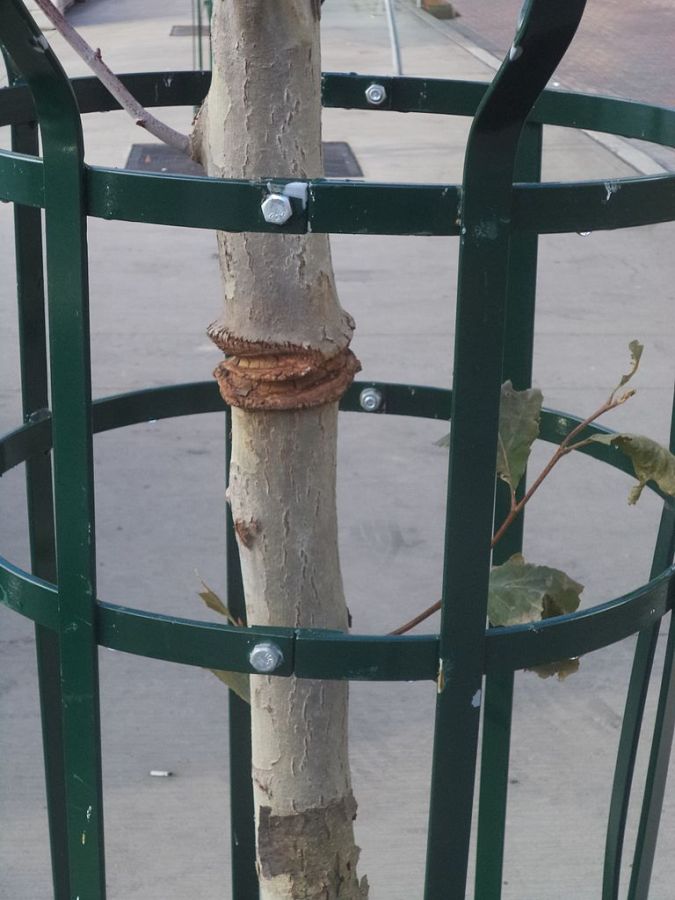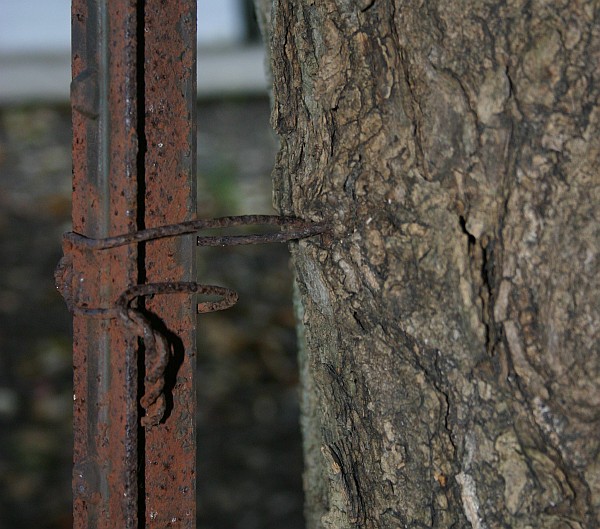
It’s tree-planting season and a good time to remember that trees can be damaged by our good intentions. In the old days we staked every newly planted tree but we’ve since learned that for most tree plantings, stakes are a bad idea.
Tree trunks become strong from the ground up by swaying in the wind. When a tree is staked, it “thinks” it already has strong roots where it’s staked so it puts effort into growing tall instead of establishing roots. The trunk becomes strong above the yoke and remains weak below it. In addition the yoke may damage the trunk, further weakening the tree as shown above.
If your new tree has a big root ball it probably doesn’t need to be staked, though there are exceptions quoted here from the Davey Tree blog. You should use stakes on …
- Bare-root trees or trees with a small root ball.
- Trees planted in areas with lots of foot traffic, like a sidewalk or street.
- New trees that can’t stand on their own or those that begin to lean.
- Eucalyptus trees, mesquite hybrid trees, oleander trees and acacia trees.
- Tall, top-heavy trees with no lower branches.
- Young trees if you live in a very windy area or if the soil is too wet or loose.”
If you use stakes make sure to remove them at the next growing season. If you don’t, the tree will grow around them like this one did at Schenley Park. See more photos at How Stakes Hurt Trees.

Still have questions? Get expert advice at Davey Tree blog, Gardening Know-how, or Northern Woodlands.
(photo credits: Wikimedia Commons (click caption for the original), and Kate St. John)